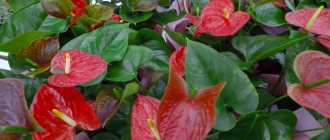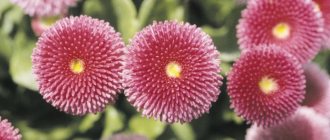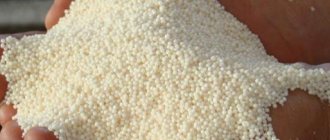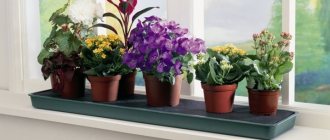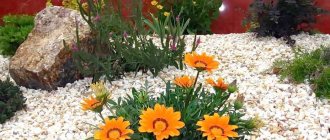Dwarf roses - what is this group of garden flowers?
Small roses are a type of lush flowers that originated in China. Local breeders, after many years of hard work, were able to develop ornamental plants, which soon gained popularity in Europe.
Small roses are ideal flowers for decorating a garden and apartment
All types of miniature roses are similar in bush size, but differ in the structure, shape and shade of the petals. In addition, the following features of small roses can be distinguished:
- The buds can be one or two colors.
- A distinctive feature of dwarf varieties is that the stems grow only upward, creating a lush bush.
- As they ripen, the petals may change color.
- Flowers are usually collected in clusters of 5-20 buds.
- With proper care, domestic species can bloom all year round.
Interesting information! The ancestor of all low-growing varieties of roses is the variety Rouletii.
These plants can be grown in almost any form - standard, trellis, climbing and, depending on the variety, can be either perennial or annual. Due to this, they are used in different ways in landscape design. Flowers are grown in pots and flower beds. They are used to create borders and alpine slides. All you need to do is choose the type of mini rose you like.
Miniature roses in landscape design (with photos)
Miniature roses in the photo
The first miniature roses appeared in China, and from there they were brought to Europe in 1810. This is a historically recorded fact, but they did not become widespread in the 19th century; their triumphal march began only in 1918, when Dr. Roulette in Switzerland found a miniature rose bush, which he subsequently propagated and named the “Roulette” rose. It was she who became the ancestor of almost all modern varieties of miniature roses.
Since 1823, this group has become very popular in France for decorating parterres in gardens and parks and for decorating winter gardens. Over time, interest in them waned. Around 1910 they began to be grown again in large numbers in pots. About 20 species were common.
In Russia, these roses were grown in the collection of the Imperial Botanical Garden, which was headed by the outstanding botanist E. Regel.
Spanish and Dutch breeders began hybridizing miniature roses on a large scale in 1940. To obtain new hybrids, they used low-growing roses from other groups. Thanks to interspecific hybridization and selection, a number of varieties were obtained that retained the main characteristics of miniature roses, but received bright and varied colors, as well as an elegant flower shape.
The description of miniature roses fully corresponds to the name of the group: these little beauties are really small - their height is only 10-30 cm, but the shoots are abundantly covered with small dark green shiny leaves.
Roses can have thin, strong thorns or be smooth-bore. The flowers are small - 1-3 cm in diameter, usually double, cup-shaped, solitary or collected in apical inflorescences. Flowering is abundant and long-lasting - lasts almost non-stop all summer.
Self-rooted miniature roses do not produce root shoots, so they are propagated by green cuttings. This is done indoors in March-September, outdoors in May-August.
The descendants of the “Roulette” rose are grown today in a variety of forms: there are bushes (considered classic), trellis, ground cover, standard, and climbing. Therefore, their use is very diverse. Miniature roses are grown mainly as potted plants, but sometimes they can be seen in flower beds, in flowerbeds, in borders, in garden groups, and on alpine hills.
The best varieties of miniature roses for growing in open ground and at home
David Austin roses - the most popular varieties
Among all the diversity of this variety, the most striking representatives stand out:
- Jewel. A bush variety with rounded leaves, bright red petals and a yellow center. Blooms from early summer to mid-autumn. A cut branch can stand for almost two weeks.
- Clementine. Ground cover hybrid with double buds. The ripe bud has a tangerine hue and a subtle citrus aroma. Has high immunity to various diseases.
- Cinderella. The white buds become soft pink over time. If you properly care for the plant, it can bloom several times per season.
- Hummingbird. Dwarf garden rose with small semi-double buds. Blooms from June to September. If grown in the southern regions, it can survive the winter without shelter. In the apartment it grows in flowerpots or pots.
- Lavender. Medium-sized bush with purple buds. Flowers grow on branches singly or in clusters of 3-5 pieces.
- Daniela. Compact miniature bushes with one distinctive feature – cup-shaped buds with pointed ends. They have high frost resistance, but weak resistance to fungal diseases.
- Gold Symphony. Small roses with some of the largest buds among dwarf varieties. The petals may be golden yellow or yellow-orange in color.
- Thumb Boy. A fairly young variety, bred in 2008. It got its name because of the structure of the bush - there is very little greenery on the branches, so the buds are located on almost bare shoots that resemble fingers.
- Amulet. Small pink roses are distinguished by the unusual appearance of their buds - when they bloom, they look more like chrysanthemums.
The amulet is classified not only among dwarfs, but also among floribundas and even scrubs
What are small roses called?
Roses with small buds - what are they called correctly? These representatives of the queen of flowers have many names - border roses (photo), miniature, dwarf and others . However, there are much more varieties bred by breeders - up to 5000 species. Of course, we won’t be able to tell you about each one, but we will be happy to provide descriptions and photos of the most popular ones.
Mini roses in the garden - planting and care in open ground
Types of roses and popular varieties - what are they?
It is best to plant dwarf flowers in open ground in the fall. At the same time, it is recommended to purchase seedlings. To plant them, you must choose a well-lit place, protected from winds and drafts.
Important! You should not plant bushes where groundwater passes too close to the surface of the earth.
Planting should be done in slightly acidic, fertile substrates. Before this, the seedling itself must be placed in water for several hours. After this, planting is performed in a step-by-step sequence:
- A hole is dug slightly larger than the size of the roots. The soil is mixed with compost.
- The rose is placed in a hole and sprinkled with soil.
- It is recommended to leave at least a meter between seedlings.
When planting in clay soil, it must be mixed with sand.
How to grow small roses at home
Small roses are flowers that can be grown at home in pots. It is important to remember that they do not tolerate cold water and coolness in the summer. The purchased plant must be given time to acclimatize, and then it must be replanted. With the onset of warm nights, the pot with the plant can be taken out to the balcony.
Additional Information! After planting, the flower should first be kept in the shade, and then gradually moved to a lighted place.
Growing
Care
When growing miniature roses in open ground, you should choose a place with good sunlight, protected from wind and drafts.
In summer, abundant watering and regular fertilizing are needed four times a year: in early and late spring, at the beginning and end of summer. In this case, nitrogen, phosphorus, potassium fertilizers, urea, ammonium nitrate, superphosphate and complete mineral fertilizer are used.
Regularly loosen the soil and weed out weeds. The soil can also be mulched.
Spray in the morning, avoiding excessive moisture.
Prune in summer, spring and autumn. In the summer, remove wilted flowers, excessively long shoots, wilted leaves, and dried branches. In mid-spring, small, thin, dried, intertwined branches and shoots that grow inward are removed.
The rest are left fifteen centimeters each, cutting off the rest. In autumn, only strong shoots are left, which are shortened. Everything else is deleted.
In autumn, strong shoots are pinched, loosening, watering and fertilizing are reduced. When night frosts occur, all leaves and immature shoots are gradually removed, then the plant is covered with spruce branches and foliage with a layer of at least ten centimeters. During the thaw, the rose needs to be ventilated.
In the spring, the spruce branches covering the bush are gradually removed as the weather warms. After complete thawing of the soil, it is removed completely. The rose is fed and treated to prevent diseases and protect against parasites.
It is easier to care for a houseplant.
To do this, the bush must be in a bright, sunny place every day for at least ten hours a day.
Twice a day, the leaves of the plant are sprayed from the back to maintain the level of air humidity required by the rose.
The leaves are washed twice a month to prevent diseases and parasites. When it's warm outside, the rose can be moved into the air.
Watering
Watering should be plentiful, once every five days, and it is better to use natural water, or, in extreme cases, settled water. The temperature of the liquid used for irrigation is eighteen degrees Celsius in winter, twenty-two degrees in summer.
Feeding can begin two months after rooting. In this case, potassium, phosphorus, nitrogen mineral fertilizers, as well as wood ash are used.
The soil
For planting in the garden, it is better to choose loamy soils, low acidity, well moistened. If there are none, then the soil can be improved. If the soil is dry and sandy, two buckets of earthen mixture, which includes humus and clay, are added to each hole. If the soil, on the contrary, is too damp and clayey, the mixture should consist of two buckets of sand and humus per planting hole.
To grow roses in a flower pot indoors, you can independently prepare a nutritious earthen mixture as follows. The bottom of the pot or other container for planting is covered with a layer of foam, on top of which moss or charcoal one centimeter thick is placed for drainage.
River sand, humus, peat and soil are mixed into a homogeneous mixture, which is poured into the pot. The planting site for growing indoor miniature roses is ready.
Reproduction
The most common and easiest way to propagate a plant is by cuttings. For indoor roses, the best time for cuttings will be from the beginning of March to the end of September. For a bush grown in open soil, this time will be from the beginning of May to the end of August.
Cuttings should be taken only from healthy bushes. They should be taken from shoots that are no more than one year old, and the middle part of the layer is used. The cutting must have at least three buds; its length is usually ten to twelve centimeters.
First, the cutting is placed in damp sand, buried four centimeters and covered with glass. After the shoot takes root (this usually happens after two weeks), it is transplanted to a place where it will grow permanently: in a garden or pot.
On our website we also talk about the Shrub rose variety.
Plant care
Self-rooted roses - what are they, varieties
Caring for mini roses is easy. They need to be watered regularly and the soil loosened after each moistening. It doesn't hurt to spray the plant. You need to feed the bush four times a season - in early spring, late spring, mid-summer and early autumn.
To give the bush its shape, it requires spring pruning. In autumn, only weak and dried branches need to be removed. A dwarf rose should be replanted only in the most extreme cases, when the pot becomes too small. After this, it should be left for a week in a dark place, and then transferred to the light.
Many varieties of dwarfs in warm regions survive the winter without problems. However, some of them should be prepared. To do this, remove all the leaves from them and cover them with insulation or film. At the same time, you must not forget to regularly open the bushes for ventilation.
Growing and proper care of flowers in pots
Landing
Landing is carried out according to the following rules:
- Prepare a container.
- If the container has already been used, clean it with a brush, do not use detergents.
- You need to make good drainage. For this you can use expanded clay: if there is a hole in the pot, the layer of expanded clay should not be more than 1 cm, but if there are no holes, then at least 3 cm.
- The soil needs to be nutritious and breathable. You can buy soil in the store or prepare it yourself by mixing turf, humus and sand in a ratio of 4:4:1.
Watering
In summer, the rose needs abundant and regular watering. Do not allow the soil to dry out. But if the summer is cold, then do not overwater the plant; for it, an excess of moisture is worse than a lack of it. After flowering has finished, watering should be stopped. During the wintering period, you need to water the dwarf rose, but very rarely, 1-2 times per period is enough.
Watering is resumed with the appearance of buds on the flower and increases as it grows and new leaves appear.
Water for irrigation should be warm, not lower than room temperature.
Top dressing
It is necessary to fertilize a rose only during the period of bud setting and flowering. Once every 10 days, feed your flower with a special fertilizer for flowering plants. By the end of flowering (beginning of autumn), fertilizing should be stopped.
Trimming
Pruning should be done after the plant has finished flowering, but spring pruning can also be done. Leave 4-5 buds on each branch and remove the rest (except leaves). Pruning the plant is the key to abundant flowering; it must be done.
Transfer
Potted roses do not like replanting, so it is carried out only if the pot is small.
The transplant is carried out as follows:
- We choose a larger container, clean and rinse it.
- The plant has very delicate roots that are very easy to damage, so it is better to soak the flower pot for half an hour. This way the earthen lump will be better separated from the pot.
- We transfer the earthen lump into a new container, sprinkle it with earth and compact it well around the plant.
It is not recommended to water the rose after transplantation. Place it in a dark place for a week, then put it back in a lighted place.
Prevention from pests and diseases
In order to prevent a flower from becoming infected, you need to:
- Make sure that the soil does not become waterlogged.
- Maintain sufficient air humidity.
- Protect the plant from drafts.
- Keep the flower away from direct sunlight.
Also, after purchasing a plant, you can treat the rose with Fitoverm, which will provide protection against pests.
Propagation of indoor crops
Dwarf roses are propagated by cuttings. They do this as follows:
- Using a knife, which must be treated with a solution of potassium permanganate, cut a stalk 10 cm long.
- The cut should be made directly under the bud, preferably oblique.
- Make the upper cut 5mm above the kidney.
- Remove leaves from the bottom of the cutting.
- Place the cuttings in water for 10 hours.
- Plant the cuttings in the prepared mixture of sand and peat.
- Heavy watering is not necessary, otherwise the cuttings may rot.
- Ensure a stable temperature of at least 18 degrees and protect cuttings from exposure to direct sunlight.
Rose blossom
In open ground, roses bloom from early summer until autumn. At home, you can achieve flowering throughout the year. Throughout this time, they must be regularly fed with complex fertilizers. With the onset of the dormant period, the pot with the bush must be moved to a cool place.
In some cases, a dwarf rose may not bloom. This is usually due to the small size of the pot, lack of lighting and nutrients in the soil.
For the appearance of bright and lush buds, roses need proper care during the dormant and flowering periods.
Planting miniature roses
When planting in the ground, the plants are buried 3-5 cm into the soil. The distance between miniature roses is 20-25 cm. When planting thickly, the plants shed their lower leaves. Plants are planted only in the spring, so that a good root system has time to develop by winter, otherwise the roses risk freezing. At first, cover with non-woven material so as not to get burned. Light frosts will not harm roses.
Plants can be planted in the ground both in pots and without them . During the period of abundant flowering, you can transplant the rose back into the container and bring it into the house, onto the terrace or balcony, but in this case in the fall it will have to be taken out of the ground for wintering. Only roses planted without pots in the soil in the spring can be left for the winter.
During the summer, miniature roses need to be watered and fed. © Christine Majul
Diseases and pests
With proper care, most rose varieties are resistant to diseases and pests. However, sometimes powdery mildew, spider mites or aphids may appear on dwarf flowers. Regular treatment with fungicides and insecticides will help get rid of problems.
Small roses are flowers that are perfect for creating a bright background in the garden or decorating your home. They are easy to care for and delight owners for a long time with small buds of different shades.
Characteristics and description of the species
Elena Stanislavskaya
I know everything and a little more about ornamental plants. I bring everything new and most interesting to life, creating unique landscape compositions and green oases in the house.
Ask a Question
The first dwarf roses were bred in China back in the 19th century. These were mini varieties of tea roses, which became the basis for the work of Swiss breeders. The result of their work was Laurenza and Indian roses, on the basis of which new modern varieties appeared.
Main characteristics of the species:
- erect bushes with a height of 15 to 60 cm;
- densely leafy plants, most varieties have glossy foliage;
- The color of the flowers can be any color except blue and dark blue shades;
- there are varieties in which the color of the flowers changes as they open, from lemon to wine red;
- rose flowers are collected in compact inflorescences from 5 to 20 pieces;
- may have buds of simple and double structure;
- long flowering from spring to late autumn.
Features of dwarf roses
Many believe that the unusually small rose bush came to us from China. But according to historical sources, the cultivation of this plant began in Switzerland. It was there that people noticed the unusual size of the rose and decided to select it. The Swiss specialists were later joined by breeders from Holland, Germany and the USA. So the little miracle spread throughout Europe and America. A large number of varieties and species of dwarf roses have been bred, which are in no way inferior in their beauty and aroma to an ordinary rose.
The main feature of miniature plants is their size.
It can be a small bush ranging in size from 12 to 35 cm or a rose with unusual flowering vines reaching 1 m in length. Dwarf roses can be grown not only in the garden, but also at home - this is the second feature of this unusual plant. Despite the apparent vulnerability of the fragile bush, the rose tolerates the harsh Russian winters well. If a gardener decides to grow a plant in open ground, it is preferable to choose frost-resistant species. There are a great many of them.
The dwarf rose, due to its size and vines, is perfect for decorating borders, verandas, attics and flower beds. Flower growers plant small bushes against the backdrop of taller flowers - the result is a very impressive flower meadow. Landscape designers use dwarf roses to decorate stone embankments or alpine hills, where an ordinary rose would look out of place with its rather tall stems. The features of the dwarf rose allow the gardener's imagination to run wild and decorate his favorite garden.

